
Park Sofitel Hotel
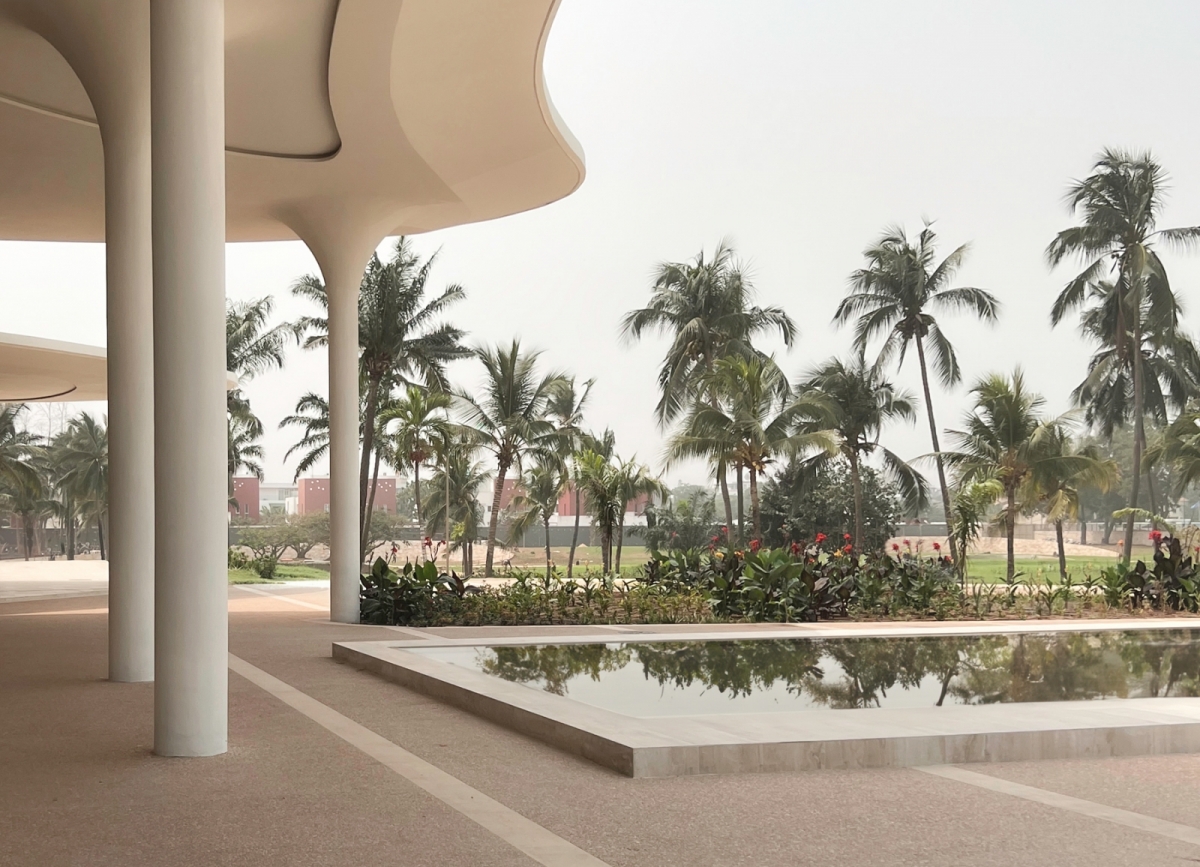
The Sofitel Park is a 16-hectare subtropical park where the new prestigious Sofitel Hotel and Leisure Center has been constructed, and the Centre International de Conférences (CIC) has been renovated. It is situated in the harbor city of Cotonou. The buildings are encompassed by an expansive park, with specific areas designed around each structure. The outdoor space comprises several zones, including entrance area, the congress garden, the art park and the hotel garden.
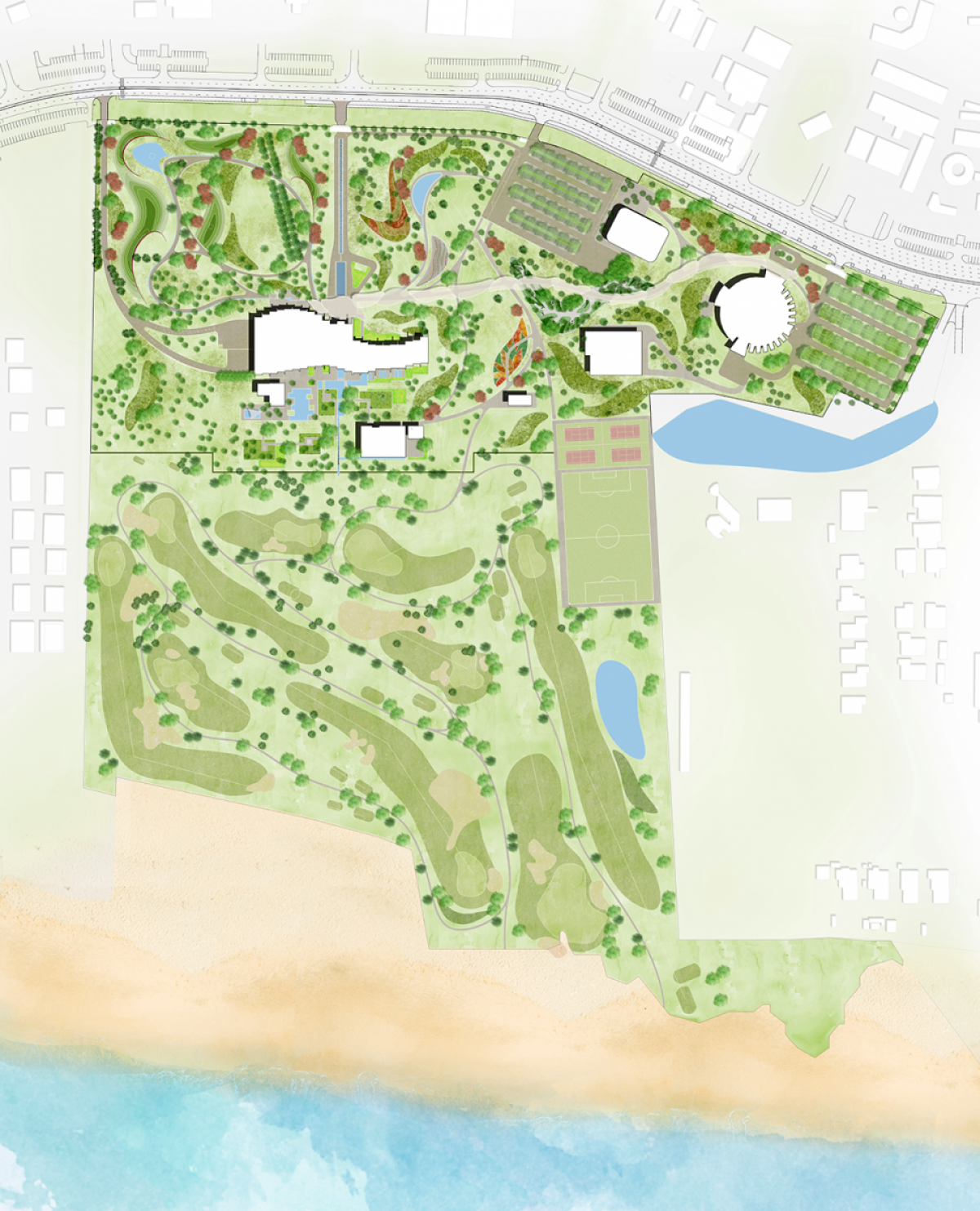
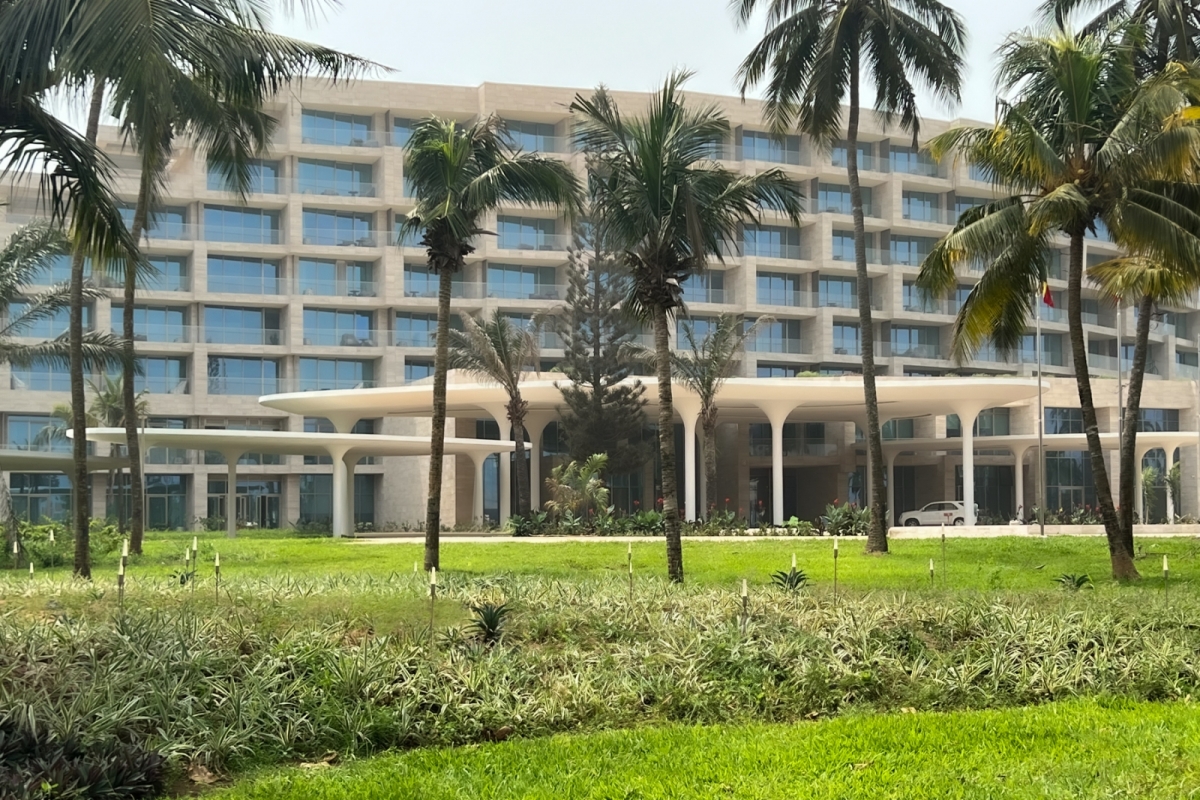
The hotel entrance features a formal lane adorned with decorative plantings, offering a welcoming ambiance. Guests are greeted at the drop-off area situated beneath a spectacular canopy designed by LOOSvanVLIET. A water mirror enhances this luxurious entrance, leaving a lasting and unforgettable impression. In the hotel garden at the rear, a water mirror serves as a visual link, seamlessly connecting both areas through the entrance lobby.
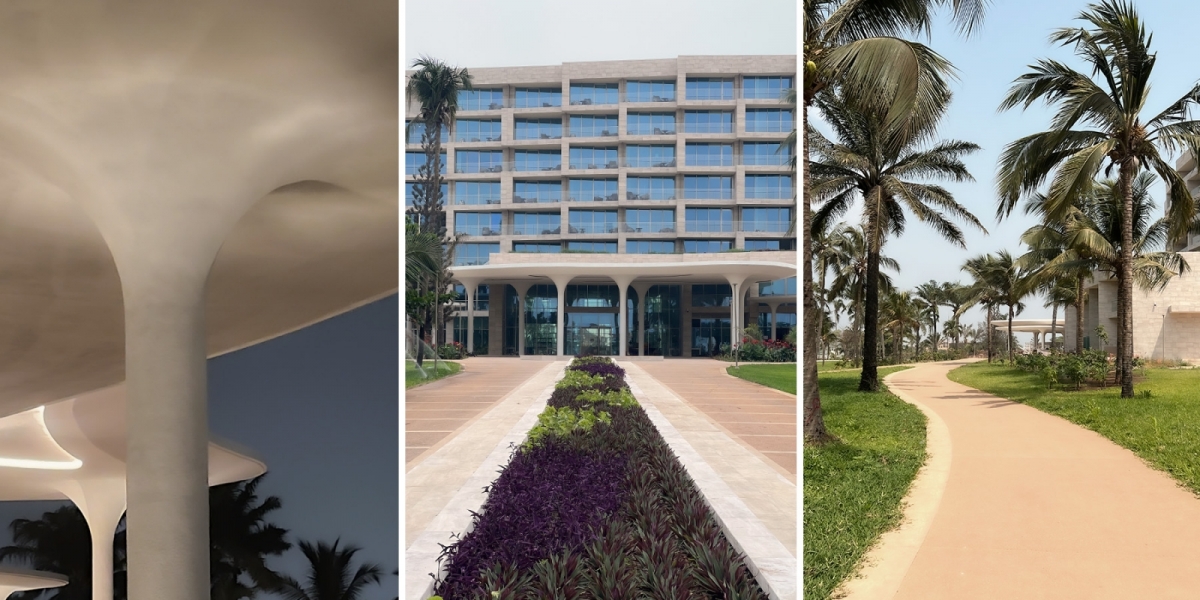

The existing planting has been seamlessly integrated into the park design whenever possible. To enhance diversity in the area, new types of plants and trees have been introduced alongside the existing ones. Several special gardens are established within the park, with designs inspired by traditional wax patterns from the textile industry. This inspiration is reflected in the creation of meandering paths and organically shaped plant areas. A consistent feature is the presence of red flowering trees. By interspersing low shrubs and plants between the trees, both enclosed and open spaces are formed. Additionally, the trees offer shade along the paths.
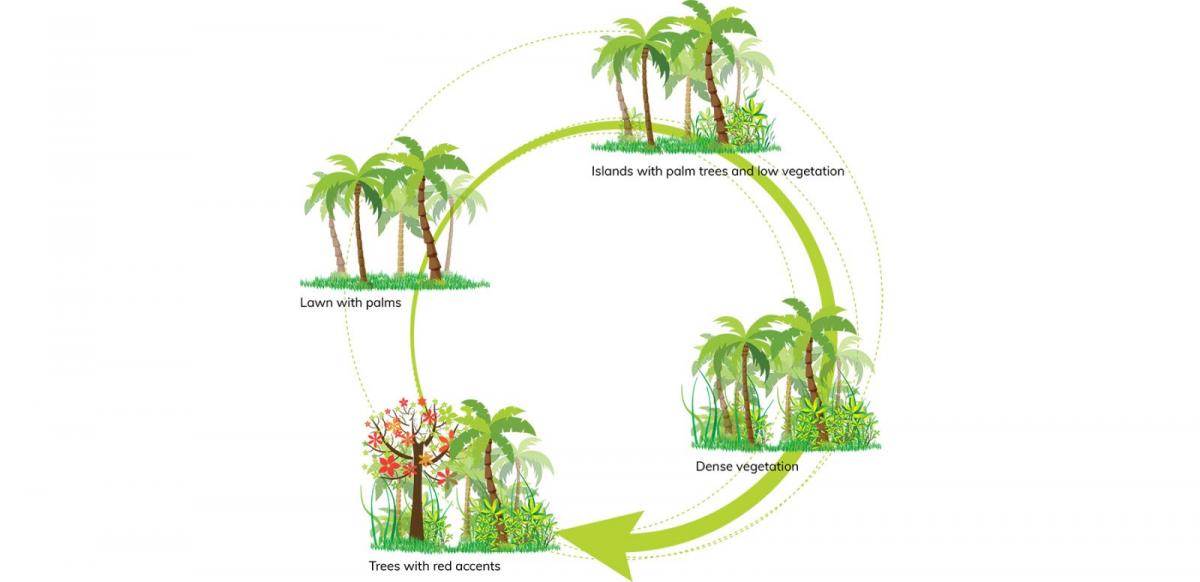
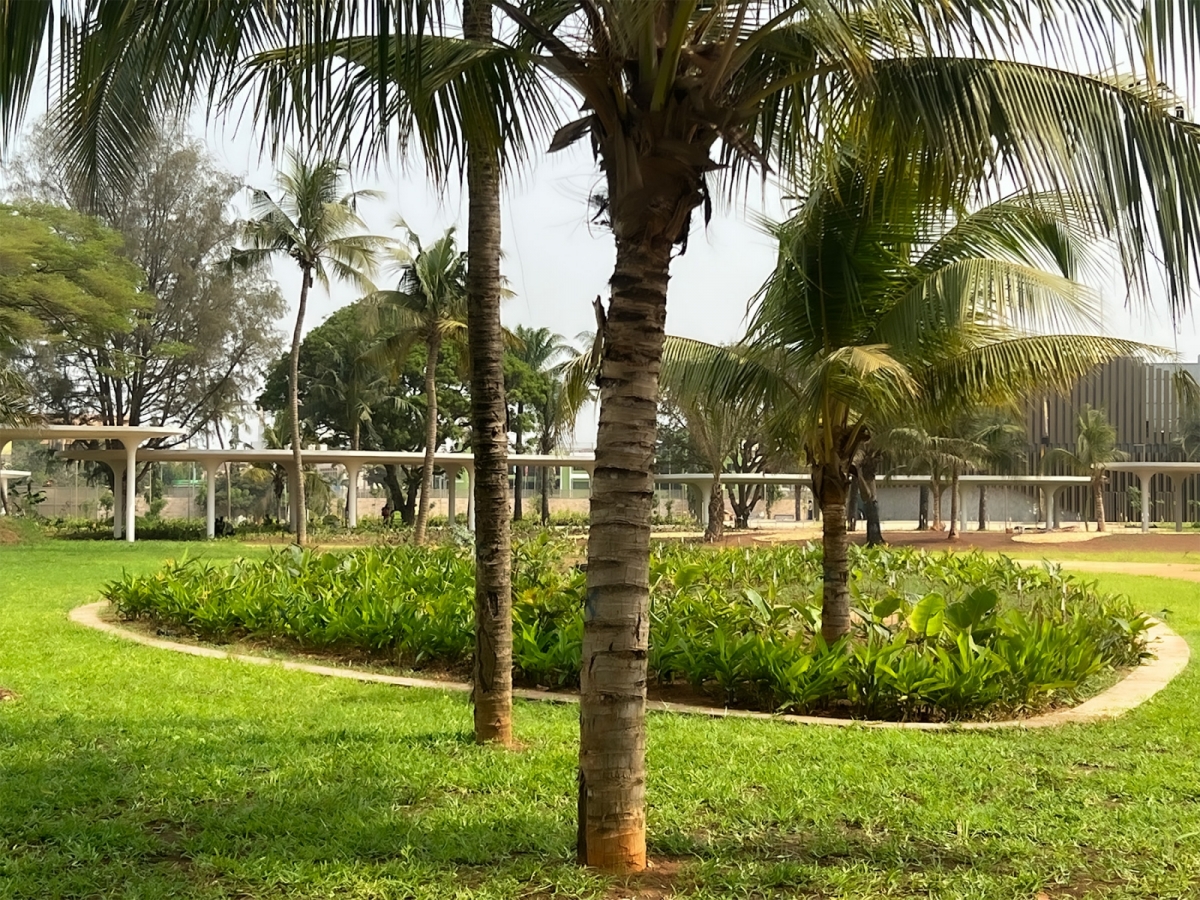

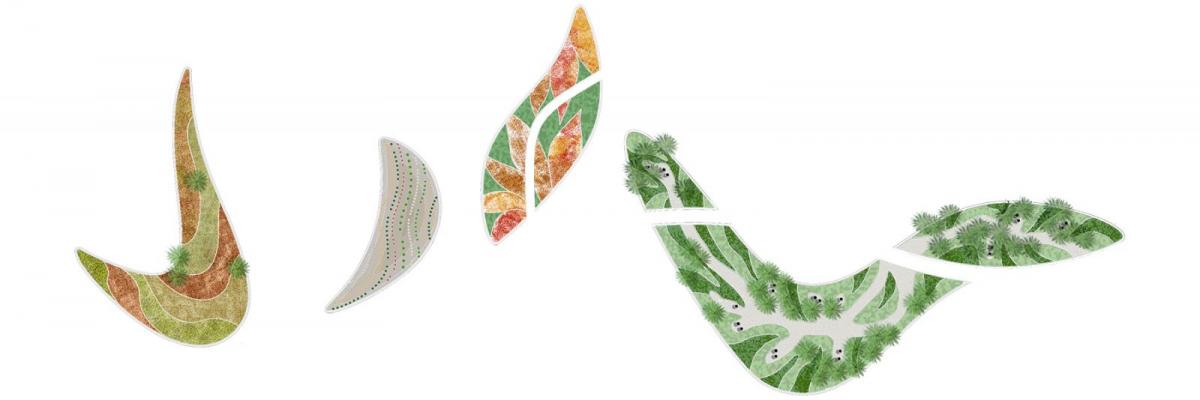
To the east of the entrance area lies the conference garden, featuring a covered walkway that extends from the hotel to the CIC. Within the conference garden, there are four distinct special gardens, each with its own unique theme. The Succulent Garden showcases undulating rows of plants, providing a visually striking display. The Grass Garden is adorned with grasses reminiscent of the savannah of Benin. In the Paradise Garden, vibrant Strelitzias alternate with Heliconias, creating a colorful and lively atmosphere. The Palm Garden serves as a green oasis, featuring various types of palm trees. Between these themed gardens are informal sunken meeting places. Drawing inspiration from an old African custom, these meeting spaces are designed for gatherings in the shade of large ‘Umbrella Tree.’ Each meeting place in the conference garden is distinguished by a prominent tree, equipped with sitting edges and seating furniture, providing comfortable and inviting spaces for interaction.


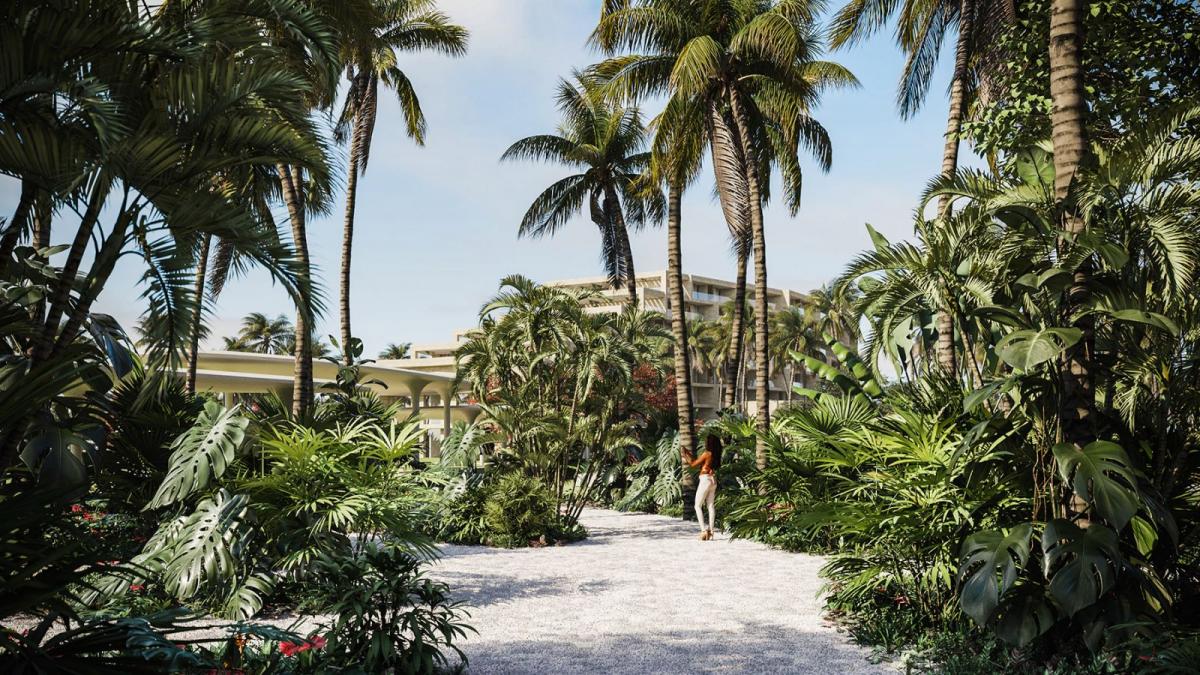
The hotel park has been transformed into an oasis featuring a diverse range of tropical plantings. A notable highlight is the canopy designed by LOOSvanVLIET, gracefully stretching from the hotel to the CIC Conference Center, serving as an iconic pathway. This captivating canopy meanders through the park, providing shade and becoming a memorable focal point of the hotel’s outdoor space.
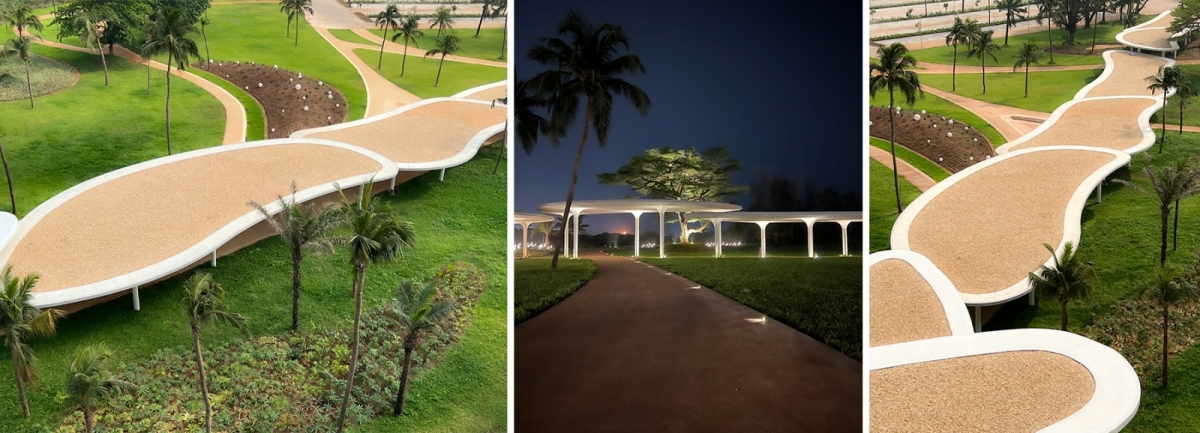
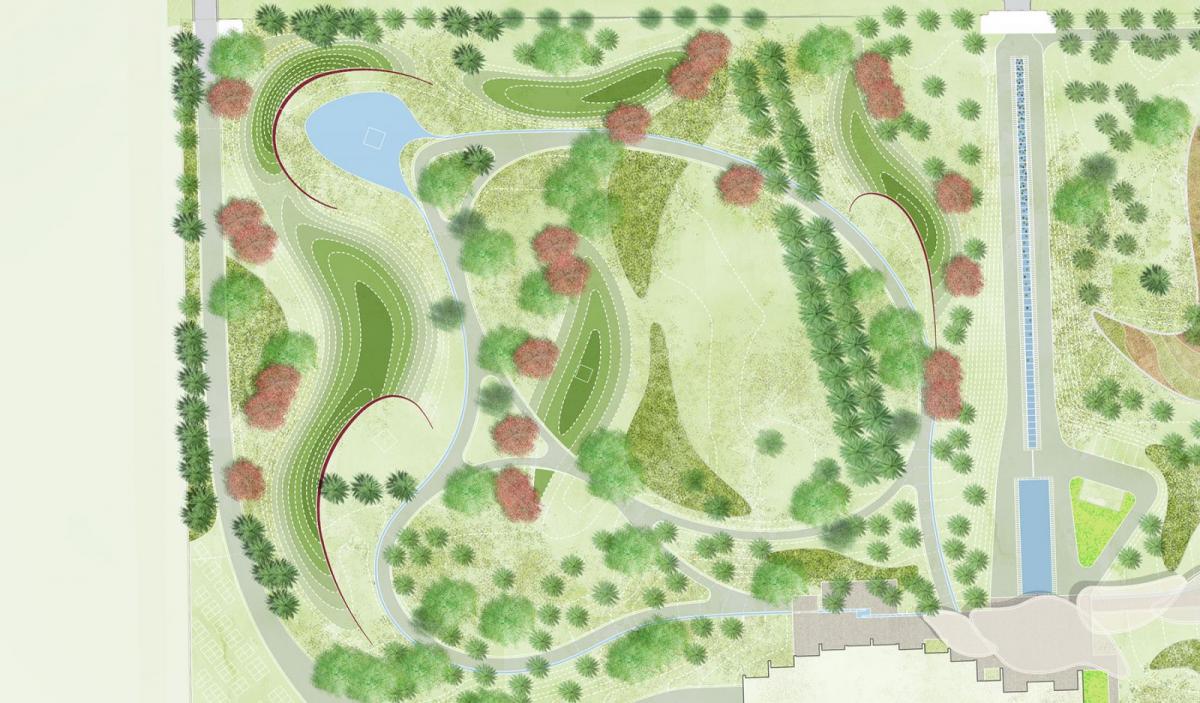
To the west of the entrance lies the artpark, where a new atmosphere has been curated by playing with height differences, thanks to the limited number of existing trees in this area. The undulating landscape features winding paths similar to those in the congress garden. Some hills are intentionally finished off vertically, providing a tight background for works of art. The art collection within the artpark can be altered or updated, allowing for a dynamic and ever-evolving display.
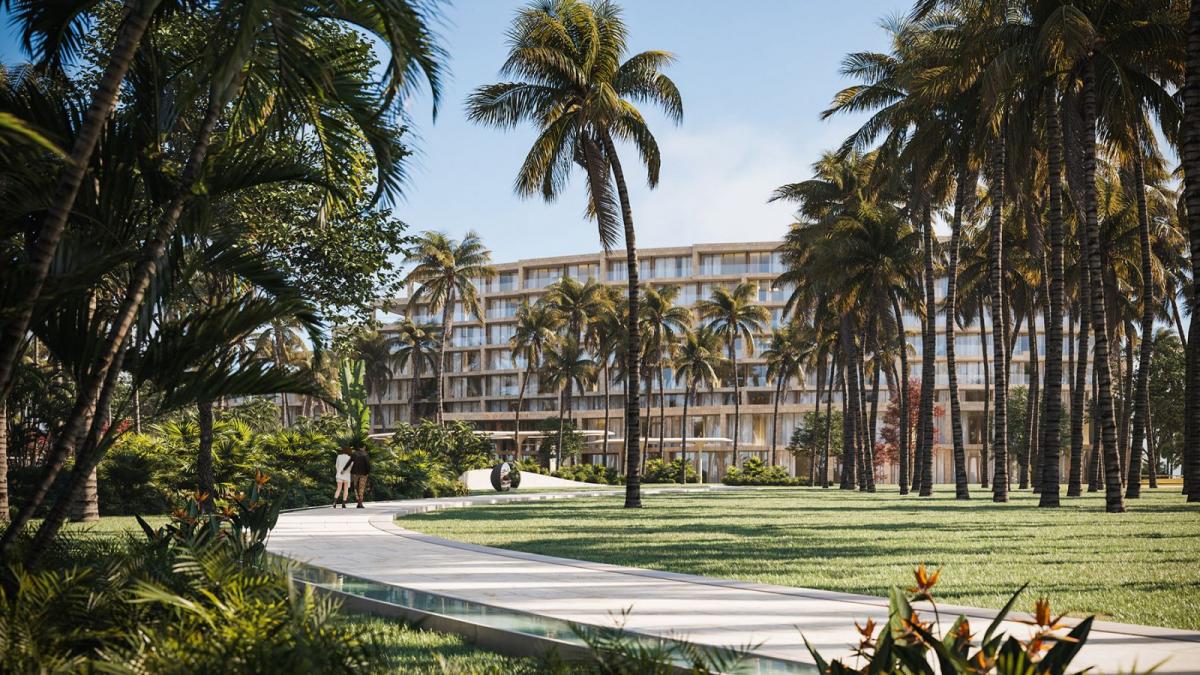
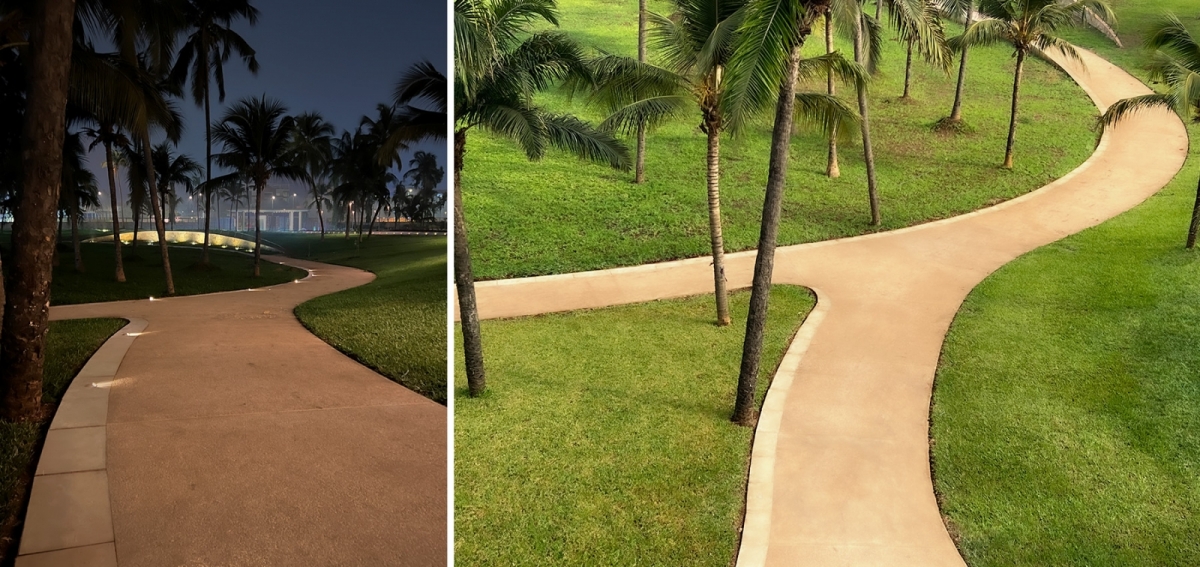
The use of unambiguous materials and colors is a key aspect of the design. A sand-colored concrete is prominently featured, contributing to the park’s elegant appearance. The incorporation of high-quality finishing for the paving and thoughtful lighting further enhances the overall sophistication of the park.
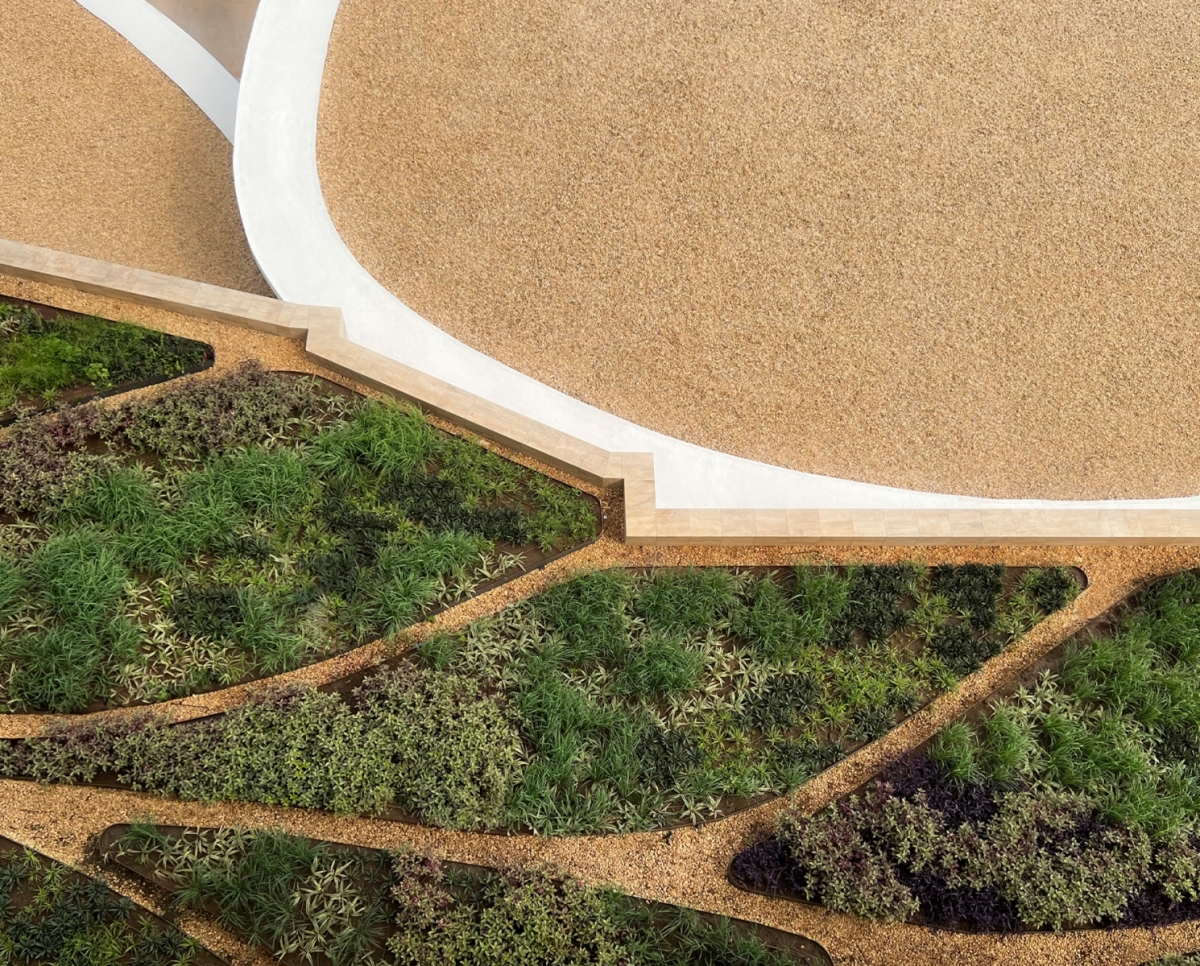
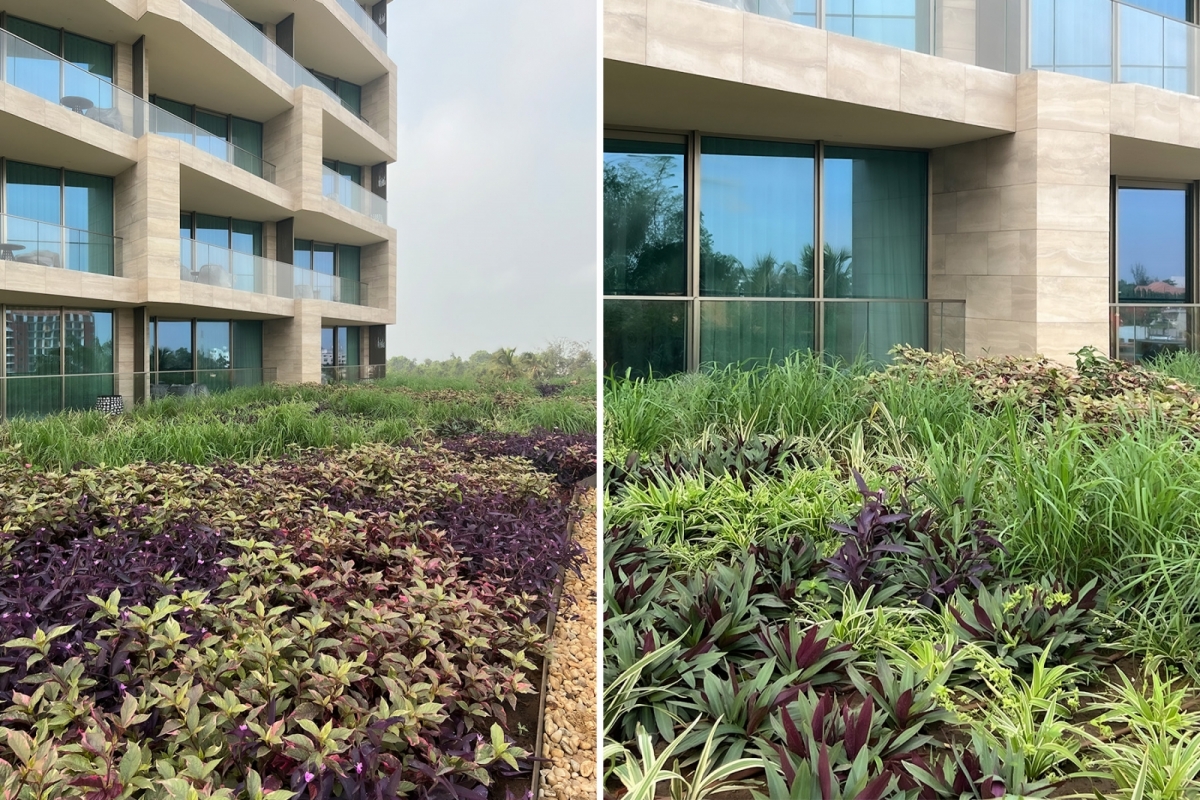
The hotel features several roof gardens, one of the first realized in Benin. Rooms adjacent to them have their own patios surrounded by plants. The selected plants are well-suited to Cotonou’s subtropical climate. Beneath the substrate layer of the roof plants, there is a retention layer designed to capture rainwater. Benin experiences a subtropical climate with two rainy seasons, providing an opportunity to offset water shortages during dry periods. This sustainable approach ensures that the roof gardens can be adequately watered.
| location | Cotonou, Benin |
| design | 2019 |
| realisation | 2021-2023 |
| client | overheid Benin |
| architect | MOKE Architecten |
| contractor | SUMMA |
| area | 16 ha |
| visualizations | StudioPXL |
| winner of the GRANDS PRIX DU DESIGN Award - INT.design, gold certification, 17th edition |